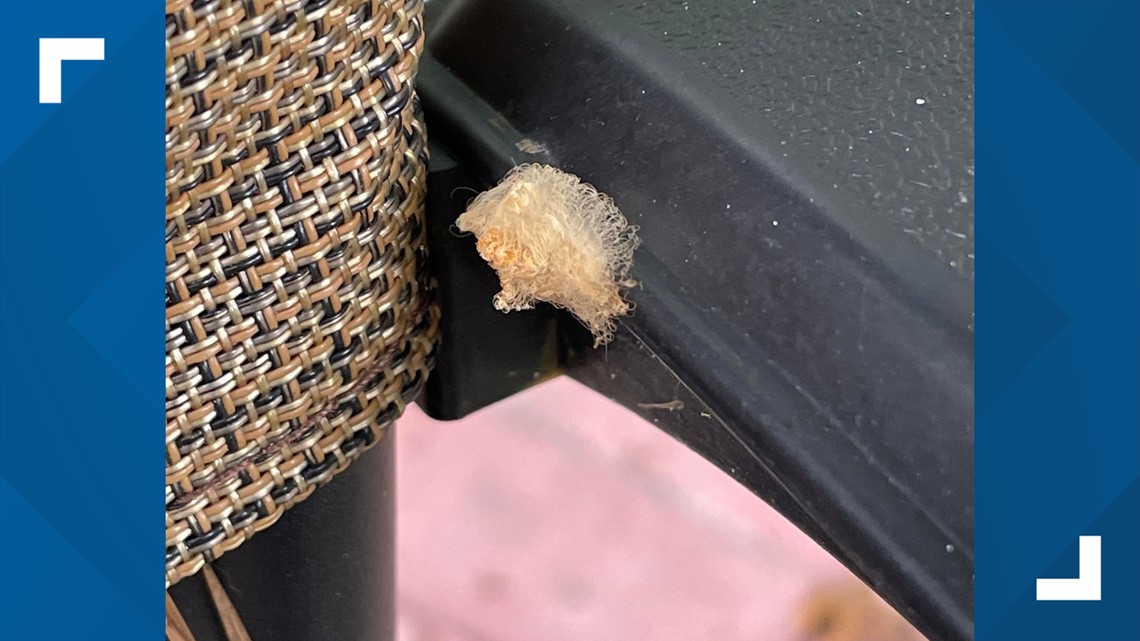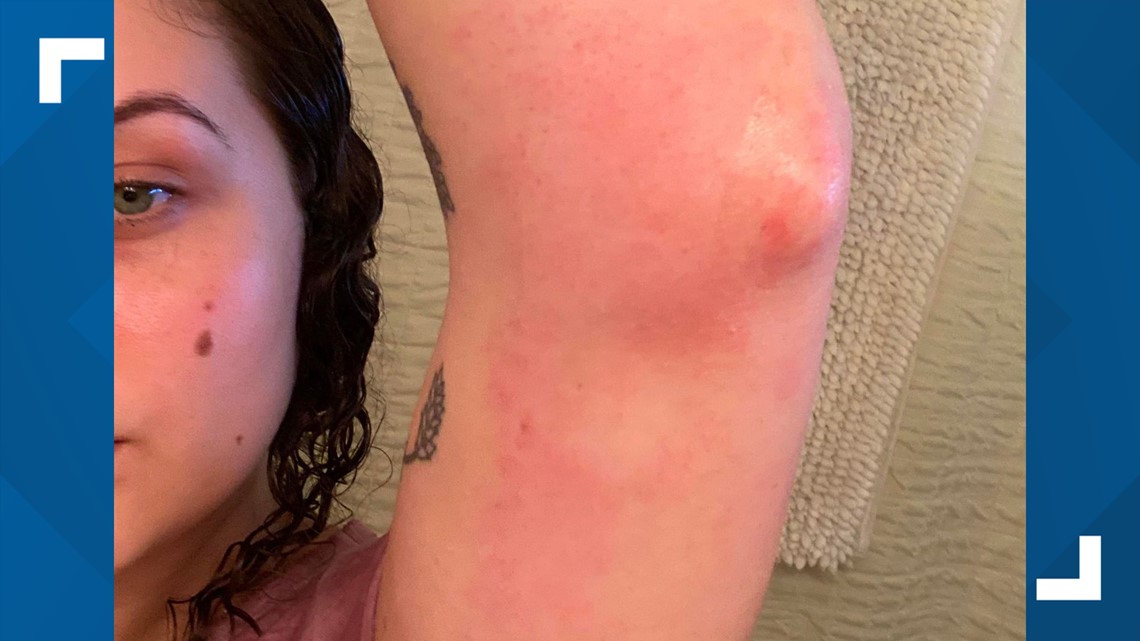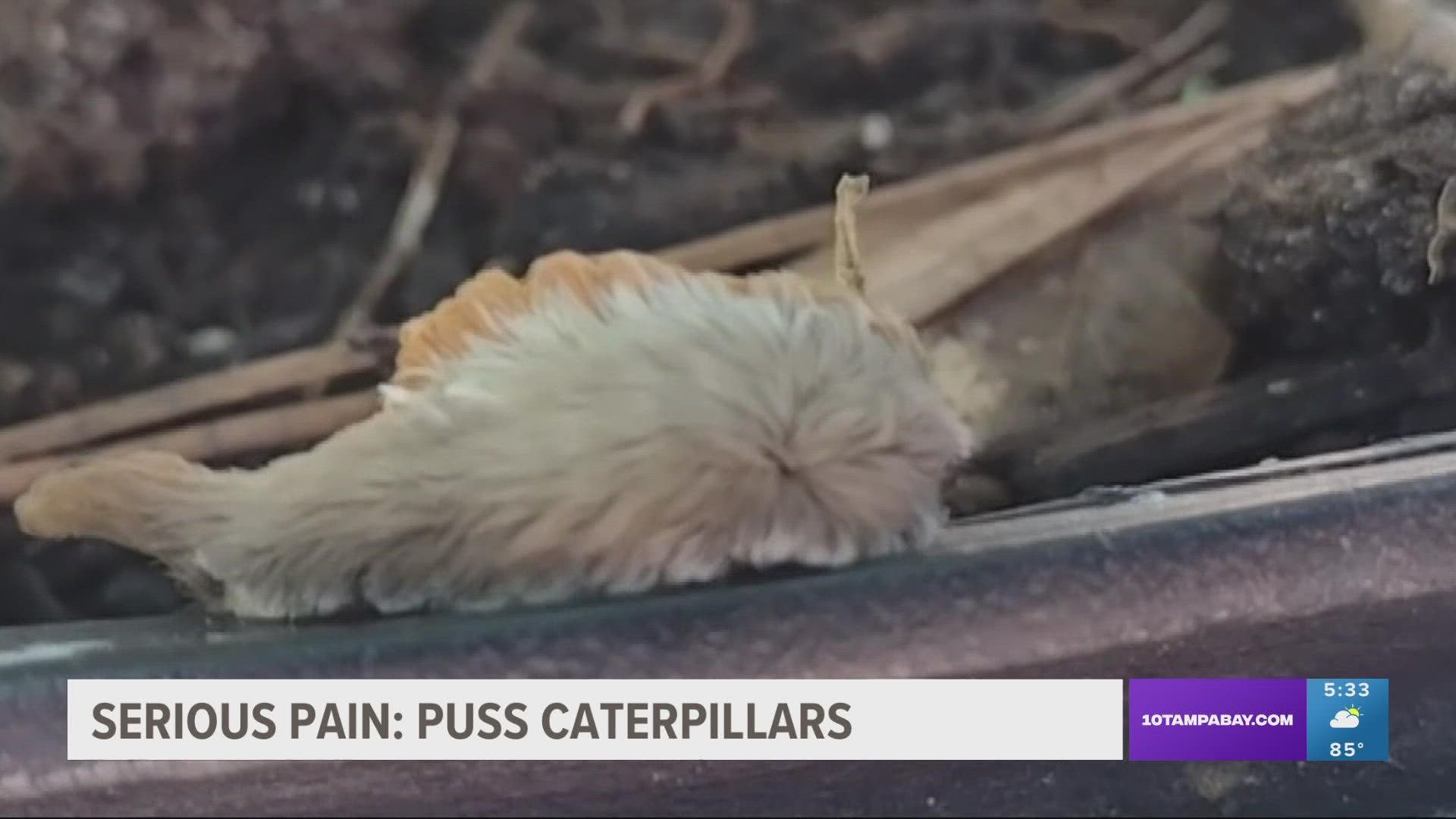FLORIDA, USA — If you've had a brush with a puss caterpillar, it's likely an experience you won't forget.
"Whenever I sat down, there was an armrest," Jessica Beall explained. "I put my elbow on the armrest just like I normally would, within seconds of me sitting down my arm just started burning really bad."
Beall, a Jacksonville resident, was stung this time last year, while visiting her mother in Callahan, Florida. It took just minutes for the pain to escalate.
"My whole arm started like swelling really bad, rash, and I had no idea what was going on... I was like I don’t know what’s going on, my arm is on fire right now and it’s getting worse," she said.
Beall and her mother started googling her symptoms. All signs pointed to a puss caterpillar. As her pain was worsening, Beall went outside to inspect the chair she was sitting on.


This fuzzy creature was nestled in the exact spot she laid her elbow. Puss caterpillars are considered the most venomous of caterpillars in the U.S. Knowing how to identify them can save you from a lot of pain.
"Just like if you had gotten stung by a bee or a wasp or something like that," Beall explained. "And then you felt this pulsing wherever you got stung, so like my arm, I felt the pulse. I know that sounds weird but I felt it in my bone, I felt like my arm was broken."


Beall said she used tape to remove the caterpillar hairs from her elbow, washed the area clean with soap, and took some ibuprofen and Benadryl to help treat her symptoms.
Florida Poison Control said it typically receives 17 calls a month for puss caterpillars. September is on track to surpass their average.
"We’ve had less than 10 this month, but we’re still early in the month," Alexandra Funk, the managing director of Florida Poison Information said.
And if you're wondering why the bugs hurt so bad, it's the same reason they look quirky: the fur.
"They have these hollowed spines, kind of like hollow tubes hidden under the fuzzy hair," Funk said. "And those tubes are attached to toxin glands. So what happens if they break off and break into our skin, the toxin is released."
It's a story shared every year, to raise awareness for the venomous critters. But it's still an insect scientists don't know everything about.
"The venom isn’t quite known, we don’t exactly know what specific type of venom it is, and there isn’t a lot of research of time dedicated to it to figure it out," Funk added.
Poison Control recommends using tape to remove the spines from the skin, then wash the area clean with soap and water.
If symptoms continue to worsen, consider seeking medical attention or call Florida Poison Control.
Florida Poison Information Center – Tampa
Tampa General Hospital
PO Box 1289
Tampa, Florida 33601-1289
For Poisoning Emergencies Call
1-800-222-1222 V/TTY

